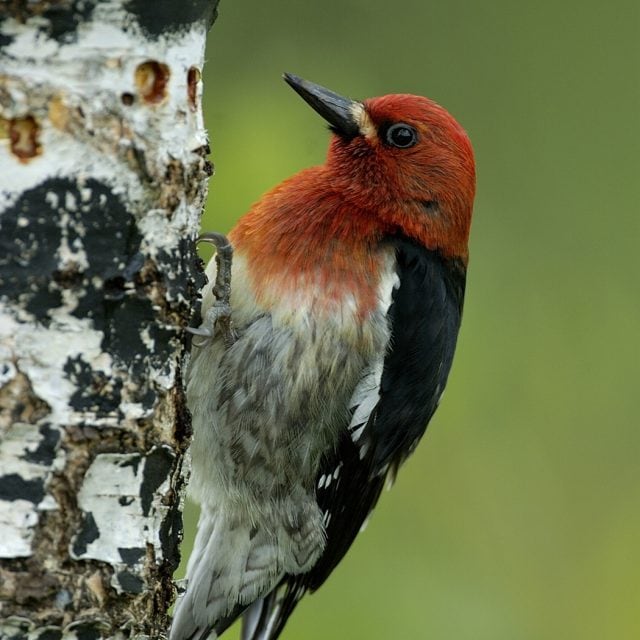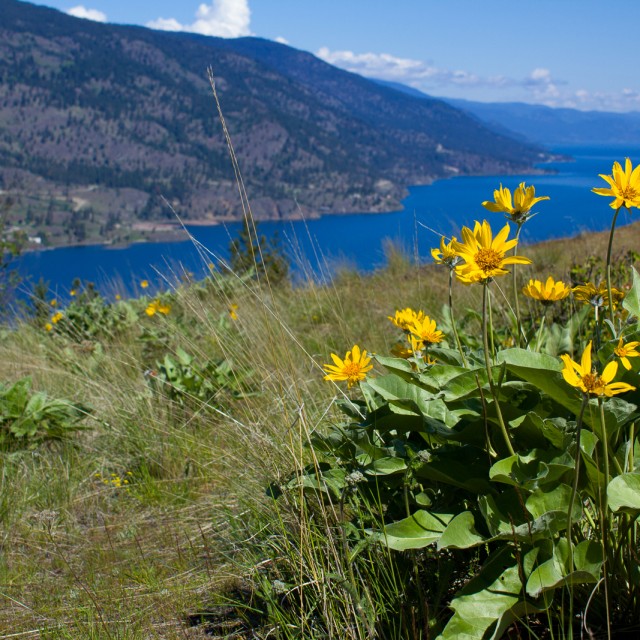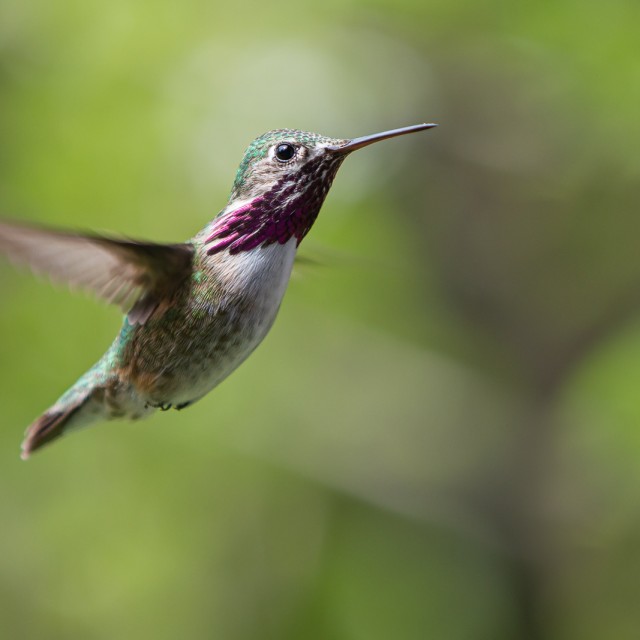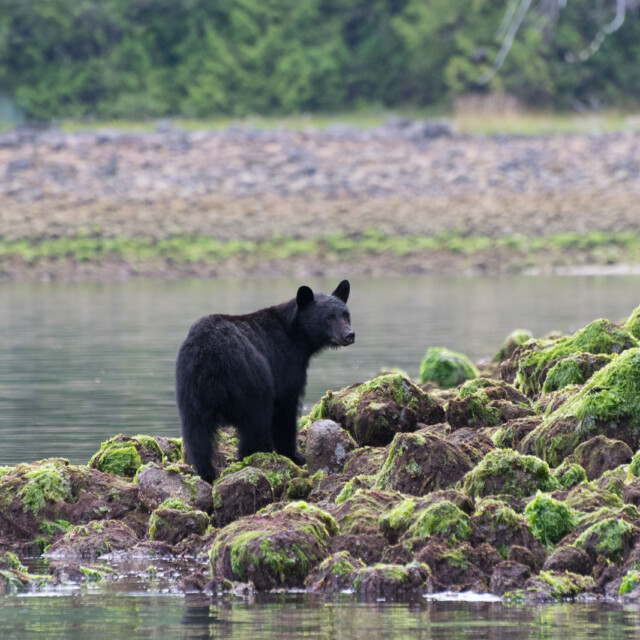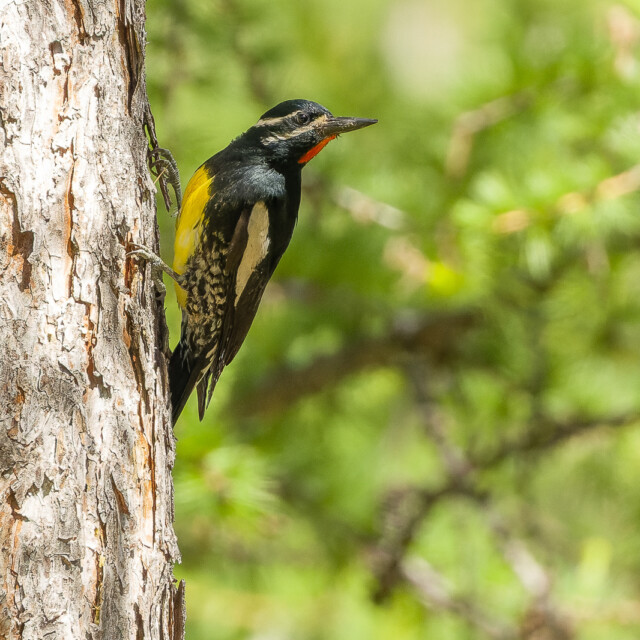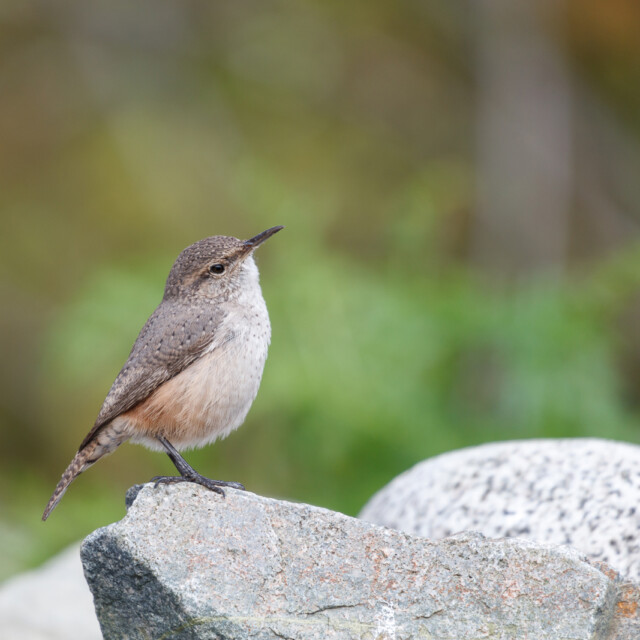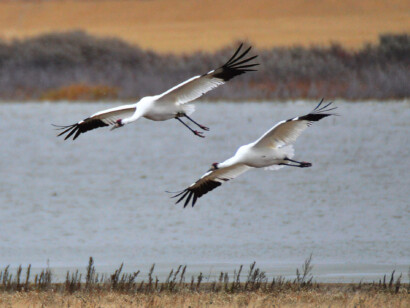British Columbia Birding with Canadian Geographic
Highlights
Highlights
- In partnership with Canadian Geographic Adventures
- Relatively easy and productive birding among the most scenically impressive areas of the province.
- Great chances to find a variety of mammals, including black bears, moose, elk, marmots and many more goodies.
- Visiting some renowned touristic hotspots and travelling to some lesser-known hotspots
- The chance to relax in the evenings over west coast cuisine and wine selection.
Map
Map
Overview
Tour Overview
Join Eagle-Eye Tours and Canadian Geographic as we visit the highlights of southern British Columbia from the west coast rainforest to the arid grasslands of the Okanagan. British Columbia is known for its diverse set of habitats and subsequent diverse birds and other wildlife.
We begin in the Greater Victoria area is one of the top birding regions in the province and ranks among the best places in Canada to see many Pacific Northwest specialties. Here we will look a variety of warblers, shorebirds and waterfowl, as well as a diverse range of seabirds including Rhinoceros Auklet, Marbled Murrelet and Pigeon Guillemot.
From here we’ll traverse inland to the famed Okanagan region, known not only for its vineyards but also for avian diversity. Areas such as Kilpoola Lake host Common Poorwills and perhaps even Sage Thrashers, while Vaseux Lake is a site where we could have our highest daily species totals for the trip. Manning Park is another highlight stopover.
Overall, this unique British Columbia birding tour offers the chance to see an incredible array of birds, in addition to some of the world’s best wildlife viewing. British Columbia is a magnificent province that has much to offer the naturalist explorer, from wild Pacific coastline to alpine tundra, and from arid desert to lush rainforest and more.
Dates & Prices
DATES & PRICES
What's Included
What's Included
Tour Price Includes
- All accommodation (Good quality)
- All meals
- Ground transportation (15-passenger vans)
- 1 EET guide and an ambassador with 5 - 7 participants, 2 EET guides and an ambassador in 2 vehicles with 8 - 12 participants
- All park, conservation and entrance fees
Tour Price Does Not Include
- Flights to/from start (Victoria) or end (Kelowna)
- Travel Insurance
- Items of a personal nature
- Taxes (5% GST)
Itinerary
Itinerary
Day 1: Arrival in Victoria
We will meet for dinner and discuss our upcoming adventure doing a relatively short birding tour of British Columbia. Night in Victoria
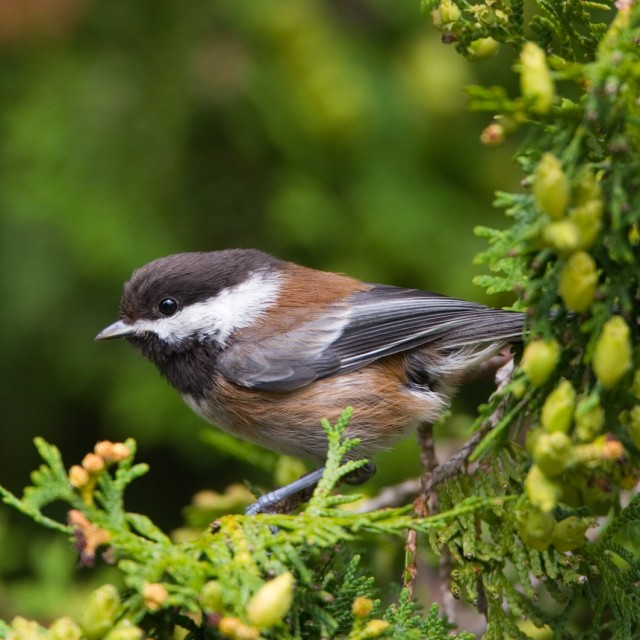
Day 2: Victoria
The Greater Victoria area is one of the top birding regions in the province and ranks among the best places in Canada to see many Pacific Northwest specialties. Panama Flats is one of Victoria's premier hotspots; its mix of scrub, meadow, and wetland habitats offers an incredible diversity of bird species, especially during spring migration. This area is excellent for spotting Bushtit, Anna’s Hummingbird, Chestnut-backed Chickadee, as well as six species of swallows and a wide variety of shorebirds and waterfowl.
MacGillivray's Warbler is a must-see for any birder visiting the west coast. A visit to the Munn Rd wetlands is one of the most reliable spots to observe this beautiful yet shy warbler. This location can also be productive for Black-headed Grosbeak, Western Tanager, and Willow Flycatcher.
Cattle Point and Uplands Park are charming coastal hotspots that offer a diverse range of seabirds, along with Gerry Oak meadows and their associated passerine species. Here, we can find Harlequin Ducks, Black Oystercatchers, Rhinoceros Auklet, Marbled Murrelet, and Pigeon Guillemot on the water, along with Bewick’s Wren, Orange-crowned Warbler, and Purple Finch.
Ending the day at Mount Douglas Park not only provides a stunning panoramic view but also allows more time to explore the unique Gerry Oak ecosystem. Expect to see Townsend’s Warbler, Black-throated Gray Warbler, Hammond’s Flycatcher, and Barred Owl. Night in Victoria.
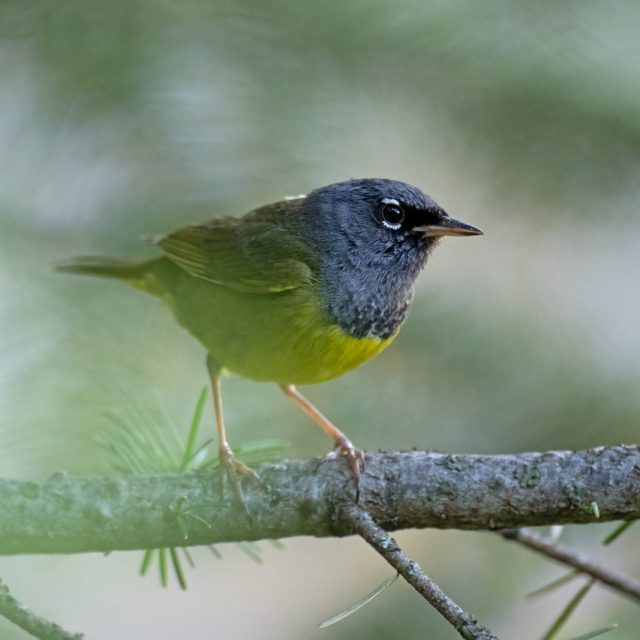
Day 3: Boundary Bay and on to Manning Park
After birding from the ferry from Sydney to Tsawwassen, we will visit a couple of great spots in the Lower Mainland. Our first stop will be at the Fraser Delta to observe where B.C.’s largest river empties into the Strait of Georgia. While here, we may try for a roosting Barn Owl or some shorebirds at Brunswick Point before exploring the renowned Boundary Bay, an incredibly important stopover site for shorebirds.
Next, we head east into the Cascade Mountains, stopping in Abbotsford to visit Willband Creek Park. Here, we will have a strong chance of seeing both American Bittern and Green Heron, along with many other Pacific Northwest specialties such as Bushtit and Bewick’s Wren.
We will spend the night at Manning Park Lodge. Depending on light and available time, we may explore Lightning Lake and the surrounding trails, where we could potentially spot species like Barrow’s Goldeneye, Townsend’s Warbler, Red-naped Sapsucker, and Western Tanager.
Night at Manning Park Lodge.

Days 4 - 6: The Okanagan
Manning Park is a stunning, mountainous area. Depending on the snowpack in the mountains, we may be able to drive fairly high up into the montane zone to pick up some higher elevation species such as Boreal Chickadee, Pine Grosbeak, Clark’s Nutcracker and Spruce Grouse. We often see Black Bears eating grass on the roadsides. At Lightning Lake we’ll have a look in the Engelmann Spruce forest for both species of Crossbill, Canada Jay and Northern Goshawk. We visit a roadside site where American Dipper nests. After lunch we’ll continue east and soon enter the Great Basin ecosystem. Nighthawk Road is a great introduction to sagebrush habitat where hopefully we’ll catch Brewer’s and Lark Sparrows singing in the evening and with much luck we could encounter something rare such as a Sage Thrasher. These birds seem to arrive annually from south of the border, which is just over the hill. We arrive in the splendid Okanagan Valley in early evening and prepare for two final days of birding— possibly the best yet.
While in the Okanagan we’ll explore the best options for sagebrush and dry forest birding. Small lakes will hold plenty of ducks including Cinnamon Teal and Redhead. Near Oliver we’ll watch breeding Wilson’s Phalaropes try to out-compete Bobolinks for our attention while we search grasslands and patches of water birch for more amazing birds. At Vaseux Lake we’ll investigate the riparian areas for migrant surprises while listening to Canyon and Rock Wren both singing from the cliffs above (Marsh, House, Bewick’s and Pacific Wrens are also present!). California Bighorn Sheep have a stronghold here. We’ll scan for large and small birds alike, including Golden Eagles across the lake and Rufous, Black-chinned and Calliope Hummingbirds in the forests. Lewis’ Woodpecker, Williamson’s Sapsucker, Lazuli Bunting and Pygmy Nuthatch each have their favourite tree species to cling to, and Great Gray Owl is a possibility, offering those “Nat Geo” photo opportunities. At White Lake we’ll look and listen for Grasshopper Sparrow and Gray Flycatcher.
If we need a breather there’s always a nearby winery to lunch at, or we can dip our feet into the warm waters of Osoyoos Lake nearby our hotel. Two nights in Osoyoos, final night in Kelowna near the airport.

Day 7: Departure
Our British Columbia birding tour ends today. Breakfast is available, but you can depart for flights home anytime today from the Kelowna airport. There are regular flights to several Canadian destinations from here.
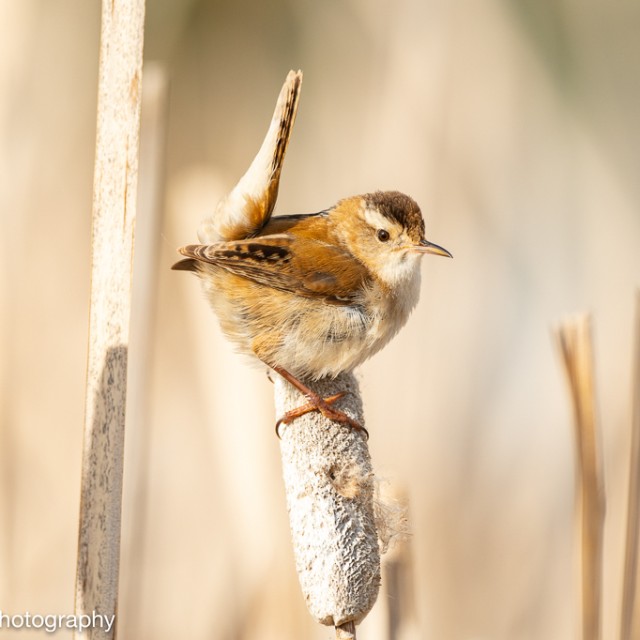
What to Expect
What to Expect
Overview
The British Columbia Birding with Canadian Geographic tour is a moderately paced birding tour, focused on finding a diversity of birds. The daily schedule will vary to account for weather, and reported bird sightings. You can expect some early mornings and the occasional evening owling expeditions.
Food
We usually have breakfast at the hotel before we head out for the day. Sometimes we will have optional pre-breakfast walks. We often take a picnic lunch in the field, but will occasionally stop at a restaurant for lunch. Dinner is usually at the lodge or a nearby restaurant. Each evening after dinner we compile the day’s checklist, review the day’s activities, birds, mammals and other observations, and plan the next day’s activities.
Accommodation
Generally we stay in standard hotel rooms in locations close to where we want to go birding.
Walking
The walking on this tour is rated easy to moderate. Most birding is done from roads and well-marked trails, but we occasionally traverse low brush, swampy and uneven terrain, and there is some hill hiking. We walk at a slow pace, stopping frequently to observe fauna and flora. When we have two leaders, we sometimes split into “faster” and “slower” groups.
Driving
Driving times will vary from 1 – 4 hours of driving when transferring to a new location. We will have many rest stops along the way when moving to a new town.
Climate
The weather in British Columbia in June can be highly variable. It can range from cool and wet on the coast to warm and dry in the interior. It is best to check the weather the week before the tour starts and pack layers!
Frequently Asked Questions
Frequently Asked Questions
Featured Wildlife
Featured Wildlife
While we cannot guarantee sightings of the birds or mammals listed below, we believe that encountering these species is quite likely during this tour.
- Barrow’s Goldeneye
- Dusky Grouse
- Williamson’s, Red-naped, and Red-breasted Sapsucker
- Lewis’s Woodpecker
- Canyon and Rock Wrens
- Bald Eagle
- Flammulated Owl
- Common Poorwill
- Calliope Hummingbird
- Black-chinned Hummingbird
- White-throated Swift
- Yellow-breasted Chat
- Gray Flycatcher
- Black-throated Gray Warbler
- Yellow-bellied Marmot
- Mountain Goat
- Black Bear
Past Tour Checklists
Past Tour Checklists
View the list of birds and other wildlife we encountered on our past tours.

